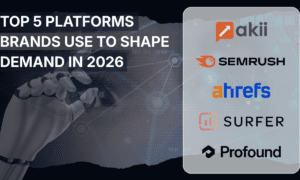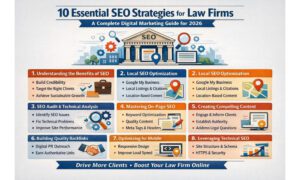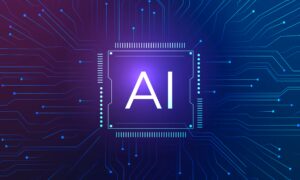Software development in the healthcare sector comes with its own set of challenges — for instance, developers often work with sensitive patient data and must comply with strict security measures. Arthur Zinnurov, Research Officer — Software Developer at the SeRP project and an expert in medical software development, shares his insights on working in this field, current IT trends in healthcare, and what can help aspiring developers succeed.
What was the starting point of your career as a developer? How did you get into programming?
I’ve been interested in computers since childhood — I used to build my own PCs and help friends when they had issues with hardware or software. Later, I explored various IT-related hobbies such as 3D modeling, game development, and photo editing. But what really drew me in was programming which felt like solving puzzles, except the problems were real and directly impacted user experience.
At first, programming was just a way for me to test my skills, but then I realized that software development is what I do best. I’m genuinely passionate about it and always strive to find solutions to the challenges that come my way.

You studied at one of Europe’s most prestigious research institutions — Swansea University. Tell us more about that.
Before joining Swansea University, I had already built a strong IT background through self-study. The university helped me organize and expand my knowledge and strengthen my skills in business software development and logical reasoning. The focus was heavily on practical skills — we had a lot of team projects that simulated real-life developer environments. Since I already had solid experience, I often took a leadership role in these projects and helped fellow students troubleshoot issues.
I also got to meet many talented developers during my time there, which opened up new perspectives and helped me approach problem-solving in different ways.
You’re currently working as a Research Officer — Software Developer. Could you tell us more about your role and what you do today?
SeRP stands for Secure eResearch Platform. We provide a secure environment that enables healthcare organizations and universities across the UK to collaborate and share confidential datasets. This eliminates the need for extensive data validation processes and speeds up file transfer and integration.
My work focuses on upgrading infrastructure by implementing synthetic data generation processes. This enables us to convert real medical records into synthetic datasets, which can be used for training AI models. Researchers can then test these models before deployment, without needing to upload sensitive health data.
What’s been the most challenging project you’ve worked on, and why?
One of the most technically challenging projects was developing the moderation management system for the Concept Library. Concept Library is a system for storing, managing, sharing, and documenting clinical codelists used in medical research. It helps healthcare institutions and universities create research study designs in a machine-readable format, accelerating the research process.
Our platform supports interface branding, so each organization can customize the visual style and features. However, every branded interface also had to include moderation functionality. This was tricky as moderation alerts were sent via email, and when a large number of clinical codelists were submitted, the notification system would overload the server.
To prevent this from happening, we implemented asynchronous message delivery, so notifications could be sent without interrupting other tasks or slowing down the system.
You worked on a significant project during the pandemic — can you tell us more about it?
One of my favorite projects was developing an auto-upload system for COVID datasets during the pandemic. I’m proud to have contributed to COVID-19 research and was honored to be trusted with such a critical task.
The project involved receiving and processing CSV datasets from a partner healthcare organization, which could be used as an additional support foundation for codelists in Concept Library. The datasets contained millions of admissions, so we had to ensure fast and error-free uploading that wouldn’t disrupt system performance.
You’ve mentioned improving automated testing coverage to 90%. How did you achieve that?
When I joined the team, I noticed that developers often submitted code without proper testing which led to bugs that later required rework, wasting everyone’s time.
I created a CI/CD pipeline using GitHub Actions that simulates the database and web application during the pipeline run. The tests rely on synthetic data to avoid exposing sensitive patient information, and the test cases are designed to cover all system functionalities.
I used Pytest for developing the tests and focused heavily on testing the pipeline itself — including how it performs under heavy data loads. I set up a test environment, ran the processes, and visualized the results using Allure to demonstrate outcomes to stakeholders. After approval, I deployed the pipeline on GitHub Actions.
Now, developers are required to run automated tests before submitting their work — otherwise, the pipeline will send the report of the weak coverage on the whole system. As a result, it persuades developers in a good way to cover the codebase with tests, which now has around 90% coverage.
What are the key challenges when automating tests in medical IT projects? How do you handle them?
The biggest challenge is the restrictions around sensitive data. For instance, in products that process such information, not all tools and libraries can be used: firstly, the software provider must be vetted to ensure data safety, which often causes delays.
To address this, I built a testing library from open-source tools and used synthetic data for the automated tests.
In your opinion, what technologies will be most in-demand in healthcare in the near future? Will your solutions be among them?
Absolutely. More healthcare organizations will adopt our approach, as the world continues moving toward automation. Besides that, synthetic data will not only support research but also make it possible to train AI agents without the risk of sensitive data disclosure.
Moreover, we’ll also see increased adoption of Large Language Models (LLMs), which will be used to build AI agents or new models for data optimisation. Databases will gradually shift toward NoSQL due to the performance issues of traditional relational databases. More researchers and healthcare institutions will adopt microservice architectures to scale their system capabilities.
Do you have any personal SaaS projects? What are you working on right now, and what would you like to do in the future?
Over the past year, I’ve been developing an accounting management system for businesses and customers, which helps track subscriptions to various products. I believe this will be very useful, as companies often spend large budgets on subscriptions without checking if this product delivers the users’ expectations. My system will notify users of their unused subscription payments or on the payments which they want to track.
As for my future plans — I’d like to explore FinTech. Personally, I enjoy optimizing complex systems — for example, enabling many users to carry out large volumes of financial operations simultaneously without overloading the system. I might build a mobile or web app — in any case, it will be a solution that benefits millions of users.
How do you maintain and develop your professional skills today? And what advice would you give to aspiring developers?
Today, technology evolves extremely fast, especially in AI — so you always have to stay up to date. Whenever a new product comes out, I try to check it out right away, so I watch reviews, install it, and test it myself. I also enjoy attending conferences as they’re a great way to connect with peers and learn what’s new in the industry.
My advice to junior developers: learn and practice as much as possible now — because when you become a middle or senior developer, you’ll have less time for learning. Don’t be afraid to try new technologies — you’ll make mistakes at first, but that’s part of the process. Mistakes help you find weak spots and grow.
The most important thing is to set a clear goal — for the next year, two, or even five. When you have a long-term goal, setbacks won’t throw you off course, and your goal will become a source of motivation.


































